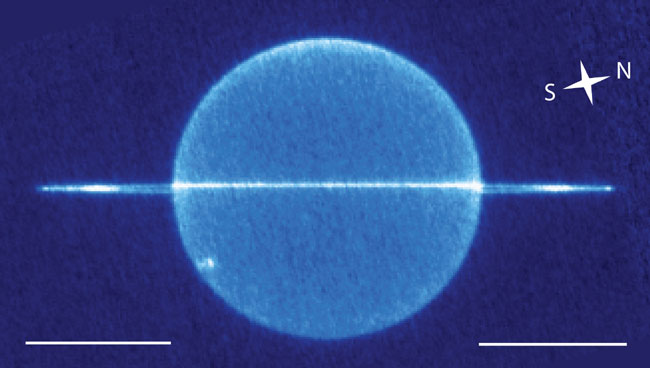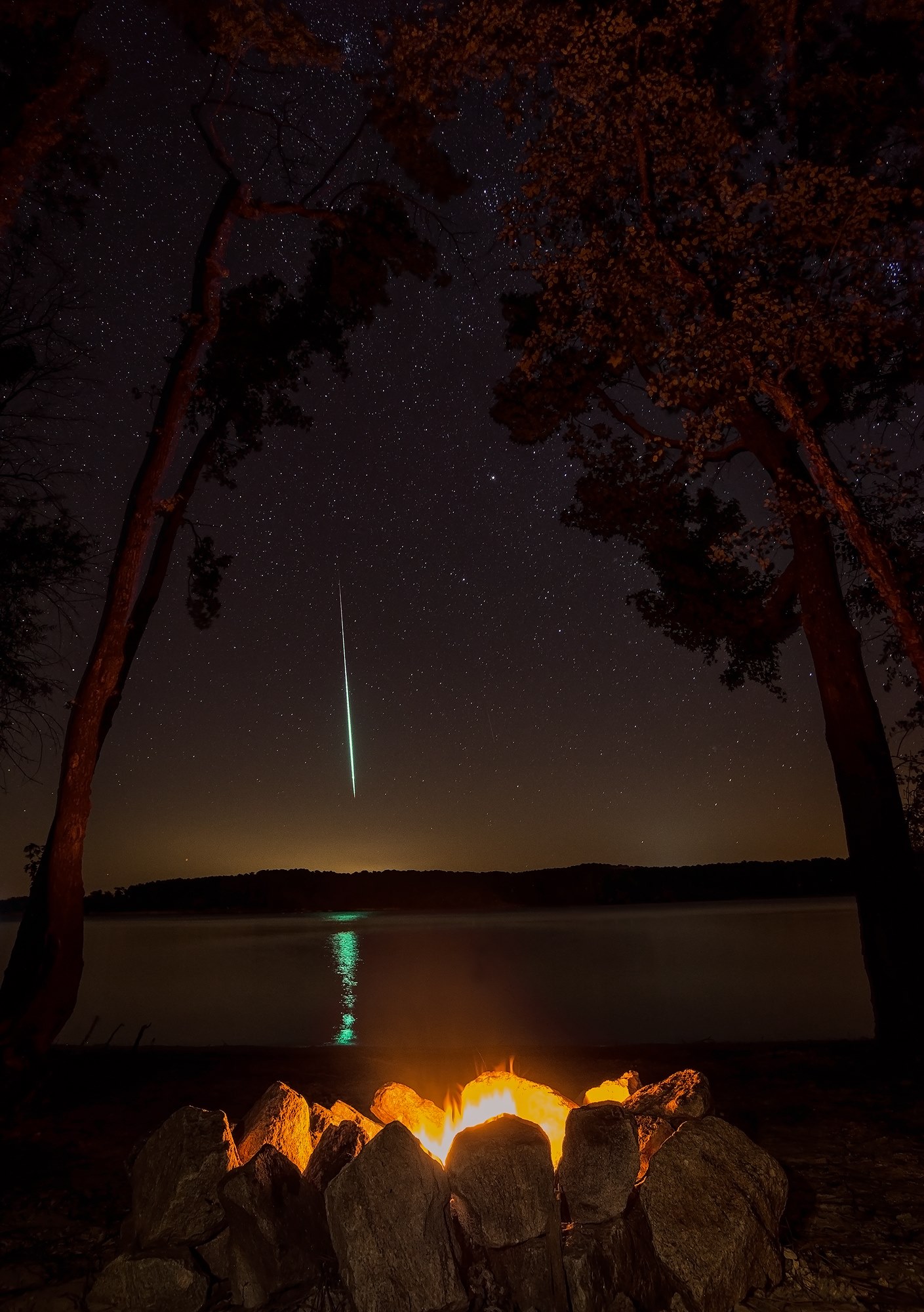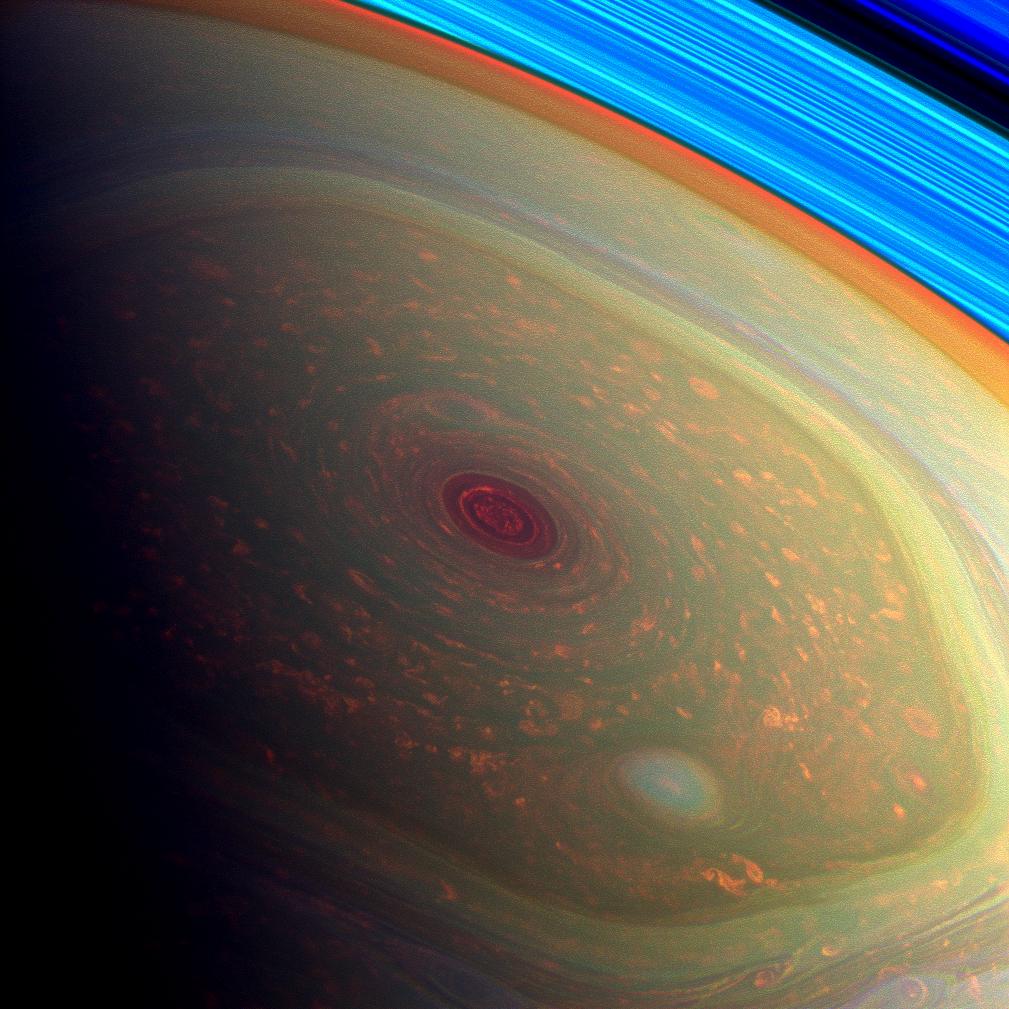Pictures of space and other planets
- Thread starter Al
- Start date
-
Two Factor Authentication is now available on BeyondUnreal Forums. To configure it, visit your Profile and look for the "Two Step Verification" option on the left side. We can send codes via email (may be slower) or you can set up any TOTP Authenticator app on your phone (Authy, Google Authenticator, etc) to deliver codes. It is highly recommended that you configure this to keep your account safe.
You are using an out of date browser. It may not display this or other websites correctly.
You should upgrade or use an alternative browser.
You should upgrade or use an alternative browser.
Anyone watching the Perseids meteor shower ? I'm about to go outside and try and get as much out of it as possible. Moonlight is pretty strong though and the citylights will interfer. But it's a clear sky!
Southern hemisphere so I don't know if it's at all visible from here.Anyone watching the Perseids meteor shower ? I'm about to go outside and try and get as much out of it as possible. Moonlight is pretty strong though and the citylights will interfer. But it's a clear sky!


I hope SOME of you know what this picture is. Probably the most bizarre and controversial star discovered in the last 50 years, and as we learn more about it, probably the last 100 years.
This is KIC 8462852 aka Tabbys Star.
The dimming of this star is so irregular that some people believe it could be a Dyson Sphere, which would mean an extremely advanced civilization of aliens. This is most likely NOT the case, but it can also not be ruled out at the moment. There is still a chance that what we are seeing is infact an alien race, capturing their suns full power potential. Even if that chance is 1%, it's the best we've got and I'm excited about the future findings of this star and what it's doing.
Lots of updates and discussion can be found here https://www.reddit.com/r/KIC8462852/
I'm sorry, but "witch head?"
it's clearly Abraham fucking Lincoln.
an almost perfect profile of Honest Abe. they really should change the name. you can't unsee it.
it's clearly Abraham fucking Lincoln.
an almost perfect profile of Honest Abe. they really should change the name. you can't unsee it.
After nearly two years, NASA regains contact with lost spacecraft
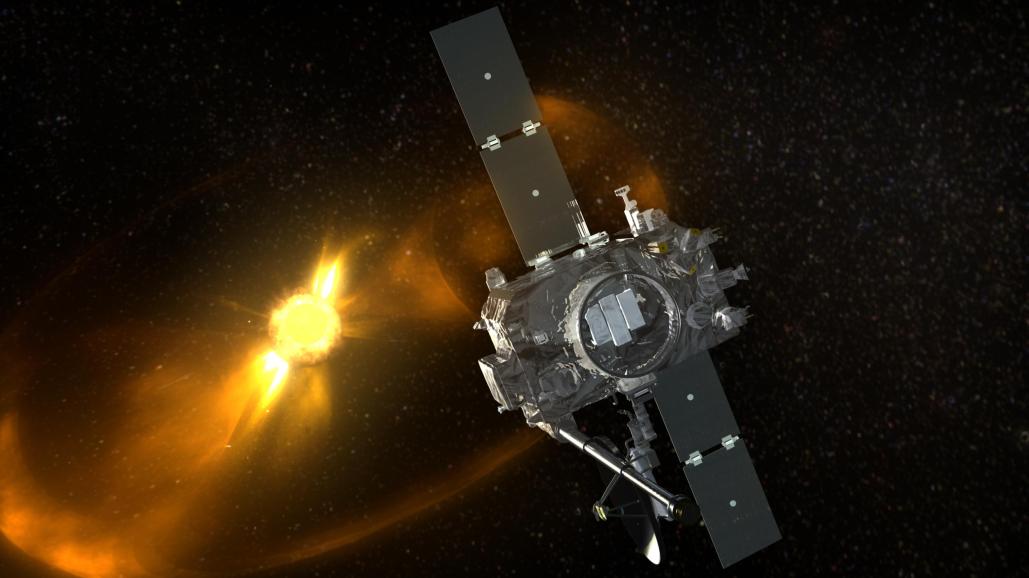
After attempting to regain contact for nearly two years, NASA has finally reestablished communications with the sun-studying satellite, STEREO-B. At 6:27 p.m. ET, NASA received a downlink signal from the spacecraft using the ground-based communication antennas in the Deep Space Network.
STEREO-B is one of two spacecraft that orbit the sun and make up the Solar Terrestrial Relations Observatory (or STEREO) mission. STEREO-Ahead (STEREO-A) orbits slightly closer to the Sun than the Earth, and STEREO-Behind (STEREO-B) orbits at a farther distance from the Sun than the Earth. Together, they provide NASA with unprecedented views of the far side of the Sun.
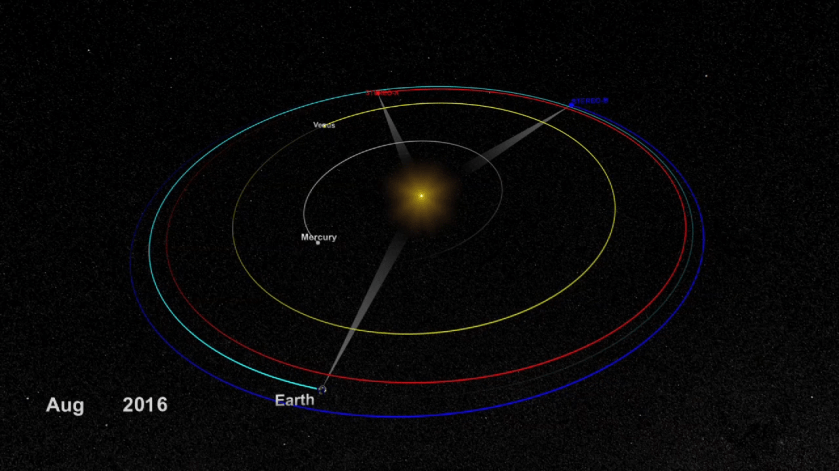
STEREO-A (red) and STEREO-B (blue) orbital locations in relation to Earth, Venus, Mercury, and the Sun / Image courtesy of NASA
Both spacecraft were launched in 2006 on a two-year mission to study solar activity on the far side of the sun. But, in a pleasant turn of events, STEREO far outlived its expected lifetime.
Like other NASA spacecraft that came before it (e.g. Solar and Heliospheric Observatory in 1998, Deep Impact Mission in 2013, the Mars Spirit Rover in 2010), STEREO’s mission extension propelled the spacecraft into new territory that led to a loss of contact.
In October, 2014, six years after the primary mission of STEREO had completed, the two spacecraft entered into a unique location in their orbits known as solar conjunction. During this time, the Sun was positioned right between the spacecraft and Earth, making communication impossible due to solar interference for over three months.
“The sun emits strongly in nearly every wavelength, making it the biggest source of noise in the sky. Most deep space missions only have to deal with sun interference for a day or so, but for each of the STEREO spacecraft, this period lasted nearly four months.” Dan Ossing, mission operations manager for the STEREO mission
With the upcoming conjunction, the STEREO team put steps in place to prepare STEREO-A and STEREO-B (machines designed to talk to the Earth every single day) for a nearly four-month period of radio silence.
The tricky part about STEREO-A and STEREO-B was that they weren’t optimized to work properly during a solar conjunction. Both spacecraft were designed with something called a command loss timer, which is essentially an automatic reset button. If the spacecraft experienced 72 hours of radio-silence (something that shouldn’t happen normally), the command loss timer would activate, correcting any communication issues the spacecraft was experiencing.
Unfortunately, the command loss timer couldn’t be changed, meaning the spacecraft would be rebooting every three days for nearly four months during the solar conjunction. Not ideal, but the STEREO team expected both spacecraft to pull through.
But before the conjunction happened, the team wanted to test the reset process. They stopped communicating with the spacecraft for three days and both STEREO-A and STEREO-B activated the command loss timer reset process. STEREO-A worked great. STEREO-B, not so much.
The STEREO team believed that the spacecraft was feeding incorrect information to itself about its own rotational speed, causing the spacecraft to spin. In a spin, the spacecraft could only receive intermittent solar power making it difficult to turn on its transmitter – the way it communicates with the Earth.
“If it’s not transmitting, we have no way of knowing if our efforts are working.” Dan Ossing, mission operations manager for the STEREO mission
In December of 2015, NASA released a press release noting that any signal that STEREO-B could transmit would likely be too weak for the antennas in the Deep Space Network to pick up. The STEREO team thought they may even have to wait until 2019, when STEREO-B would be in a location that the Hubble Space Telescope could image, to receive any further details about the spacecraft’s position.
Luckily, that didn’t turn out to be the case and we didn’t have to wait that long.
Sunday’s signal from STEREO-B provided NASA with valuable information about the spacecraft’s position. With this data, the STEREO team will now work to put a recovery plan in place, re-establish the spacecraft’s desired position and evaluate the health of its subsystems.
https://techcrunch.com/2016/08/22/after-nearly-two-years-nasa-regains-contact-with-lost-spacecraft/

After attempting to regain contact for nearly two years, NASA has finally reestablished communications with the sun-studying satellite, STEREO-B. At 6:27 p.m. ET, NASA received a downlink signal from the spacecraft using the ground-based communication antennas in the Deep Space Network.
STEREO-B is one of two spacecraft that orbit the sun and make up the Solar Terrestrial Relations Observatory (or STEREO) mission. STEREO-Ahead (STEREO-A) orbits slightly closer to the Sun than the Earth, and STEREO-Behind (STEREO-B) orbits at a farther distance from the Sun than the Earth. Together, they provide NASA with unprecedented views of the far side of the Sun.

STEREO-A (red) and STEREO-B (blue) orbital locations in relation to Earth, Venus, Mercury, and the Sun / Image courtesy of NASA
Both spacecraft were launched in 2006 on a two-year mission to study solar activity on the far side of the sun. But, in a pleasant turn of events, STEREO far outlived its expected lifetime.
Like other NASA spacecraft that came before it (e.g. Solar and Heliospheric Observatory in 1998, Deep Impact Mission in 2013, the Mars Spirit Rover in 2010), STEREO’s mission extension propelled the spacecraft into new territory that led to a loss of contact.
In October, 2014, six years after the primary mission of STEREO had completed, the two spacecraft entered into a unique location in their orbits known as solar conjunction. During this time, the Sun was positioned right between the spacecraft and Earth, making communication impossible due to solar interference for over three months.
“The sun emits strongly in nearly every wavelength, making it the biggest source of noise in the sky. Most deep space missions only have to deal with sun interference for a day or so, but for each of the STEREO spacecraft, this period lasted nearly four months.” Dan Ossing, mission operations manager for the STEREO mission
With the upcoming conjunction, the STEREO team put steps in place to prepare STEREO-A and STEREO-B (machines designed to talk to the Earth every single day) for a nearly four-month period of radio silence.
The tricky part about STEREO-A and STEREO-B was that they weren’t optimized to work properly during a solar conjunction. Both spacecraft were designed with something called a command loss timer, which is essentially an automatic reset button. If the spacecraft experienced 72 hours of radio-silence (something that shouldn’t happen normally), the command loss timer would activate, correcting any communication issues the spacecraft was experiencing.
Unfortunately, the command loss timer couldn’t be changed, meaning the spacecraft would be rebooting every three days for nearly four months during the solar conjunction. Not ideal, but the STEREO team expected both spacecraft to pull through.
But before the conjunction happened, the team wanted to test the reset process. They stopped communicating with the spacecraft for three days and both STEREO-A and STEREO-B activated the command loss timer reset process. STEREO-A worked great. STEREO-B, not so much.
The STEREO team believed that the spacecraft was feeding incorrect information to itself about its own rotational speed, causing the spacecraft to spin. In a spin, the spacecraft could only receive intermittent solar power making it difficult to turn on its transmitter – the way it communicates with the Earth.
“If it’s not transmitting, we have no way of knowing if our efforts are working.” Dan Ossing, mission operations manager for the STEREO mission
In December of 2015, NASA released a press release noting that any signal that STEREO-B could transmit would likely be too weak for the antennas in the Deep Space Network to pick up. The STEREO team thought they may even have to wait until 2019, when STEREO-B would be in a location that the Hubble Space Telescope could image, to receive any further details about the spacecraft’s position.
Luckily, that didn’t turn out to be the case and we didn’t have to wait that long.
Sunday’s signal from STEREO-B provided NASA with valuable information about the spacecraft’s position. With this data, the STEREO team will now work to put a recovery plan in place, re-establish the spacecraft’s desired position and evaluate the health of its subsystems.
https://techcrunch.com/2016/08/22/after-nearly-two-years-nasa-regains-contact-with-lost-spacecraft/
Globule cg4 looks like a galactic flower throwing the seeds for life into the vastness of the universe...something like that.
Or the mouth of madness.
Oh, and how about this? An earth sized planet is discovered nearby... very nearby:
http://www.nature.com/news/earth-si...rby-star-is-astronomy-dream-come-true-1.20445
Or the mouth of madness.
Oh, and how about this? An earth sized planet is discovered nearby... very nearby:
http://www.nature.com/news/earth-si...rby-star-is-astronomy-dream-come-true-1.20445
Proxima Centauri, the star closest to the Sun, has an Earth-sized planet orbiting it at the right distance for liquid water to exist. The discovery, reported today in Nature1, fulfils a longstanding dream of science-fiction writers — a potentially habitable world that is close enough for humans to send their first interstellar spacecraft.
Last edited:
http://arstechnica.com/science/2016/08/could-breakthrough-starshots-ships-survive-the-trip/
It's really fascinating, the possibility of seeing interstellar worlds through the lens of a spacecraft we sent at 20% the speed of light, all within our lifetimes. It will be a tremendous feat of human ingenuity and engineering to overcome these obstacles, though.
When a piece of dust becomes a dangerous object, that's when you know you're going incredibly fast.
It's really fascinating, the possibility of seeing interstellar worlds through the lens of a spacecraft we sent at 20% the speed of light, all within our lifetimes. It will be a tremendous feat of human ingenuity and engineering to overcome these obstacles, though.
When a piece of dust becomes a dangerous object, that's when you know you're going incredibly fast.
That story is an incredible read:http://arstechnica.com/science/2016/08/could-breakthrough-starshots-ships-survive-the-trip/
It's really fascinating, the possibility of seeing interstellar worlds through the lens of a spacecraft we sent at 20% the speed of light, all within our lifetimes. It will be a tremendous feat of human ingenuity and engineering to overcome these obstacles, though.
When a piece of dust becomes a dangerous object, that's when you know you're going incredibly fast.
Dust presents a somewhat different problem. Small dust particles will essentially act like a simultaneous bombardment by a lot of gas atoms. That's because the energy binding things together in a dust particle is tiny compared to the energy of the collision itself, and the dust is largely composed of heavier atoms. But a sufficiently large dust particle will create a collision energetic enough to destroy a craft. And "sufficiently large" isn't very big; the authors estimate that it only has to be 15 micrometers across to kill off the craft. Fortunately, dust particles this size are rare, and the authors calculate the odds of running into one at 1050 to one against.
Thanks for posting that!
Alien life, or noise? Russian telescope detects 'strong signal' from sun-like star
Signal detected a year ago from HD164595, only 95 light years away and with at least one planet, but Seti scientists are scanning the area and have yet to find it
As David Bowie might have sung: is there life on HD164595b?
A Russian radio telescope scanning the skies has observed “a strong signal” from a nearby star, HD164595, in the constellation Hercules. The star is a scant 95 light years away and 99% of the size of Earth’s own sun. It has at least one planet, HD164595b, which is about the size of Neptune and has a 40-day year.
Seth Shostak of the Search for Extraterrestrial Intelligence Institute (Seti) in Mountain View, California, told the Guardian he was shocked to have learned of the discovery only now – the readings from Russian radio telescope Ratan-600, Shostak said, were taken a year ago.
Seti, a private organization, searches the skies for alien life and has been underwritten by US government divisions as diverse as Nasa and the Department of Energy. Operated by the Russian Academy of Sciences, Ratan-600’s primary area of focus is monitoring the sun, though it has contributed to Seti’s work.
The news came to international attention on Saturday through Claudio Maccone of the University of Turin in Italy, who attended a talk by the scientists who recorded the signal on 15 May 2015. Maccone passed data from the presentation to the science and science-fiction writer Paul Gilster, who maintains a blog about interstellar exploration called Centauri Dreams.
Maccone sent the Guardian his proposed presentation for the International Academy of Astronautics 2016 meeting on the subject of the search for alien life, set for 27 September. He will call for the permanent monitoring of HD164595. “The power of the signal received is not unrealistic for type I civilizations,” he wrote.
The phrase “type I civilization” is a designation on the Kardashev scale, named for Russian astrophysicist Nikolai Kardashev developed in the 1960s and described in English in his 1985 paper On the Inevitability and the Possible Structures of Supercivilizations. A type I civilization would be similar to the current development of technology on earth.
“Could it be an ET?” asked Shostak rhetorically. “Of course, but [Ratan-600] didn’t have a receiver that has any spectral resolution.” The receiver on the Russian radio telescope is very wide, which aids it in its primary mission of monitoring solar activity but also means that, like a terrestrial radio receiving a news station, rock’n’roll station and country station at the same time, it is difficult to discern which band is broadcasting at which frequency. “They have a receiver that would swallow a big chunk of the radio dial at once,” Shostak said.
Because the receiver covers such a big sweep of the radio dial, it is hard to tell if the signal comes from intelligent life.
If it is being broadcast across a large chunk of the radio spectrum, the noise is probably coming from a quasar or another source of stellar “noise”; if it is over a narrower band but very strong, it is likelier to be the product of intelligence.
Gilster said he was curious about the possibility that the signal could be caused by “microlensing” – a quirk of gravity that occurs when massive objects like stars or quasars are aligned behind another heavenly body.
“My own thought is that this is very possibly a one-time signal, much like the famous WOW! signal some years back,” Gilster said. On 15 August 1977, astronomer Jerry Ehman received a powerful radio signal from a group of stars called Chi Sagittarii; he circled the surprising spot on the readout and wrote “WOW!” The signal never returned.
“If it too doesn’t repeat,” said Gilster, “then we won’t know what it was, including the possibility of some kind of local signal whose source just hasn’t been figured out.”
Shostak said he wished he had been made aware of the signal earlier. “Why is it that we’re hearing about this now because one of the guys gave a talk in Moscow a year ago?” he asked. “Maccone’s explanation is that the Russians are ‘shy’. [But] it’s generally accepted procedure in the Seti community if you find a signal that you think is interesting, you call up people in another observatory and say: ‘Hey, here’s the position in the sky,’ and you see what happens.”
Gilster said his understanding was that the Russian team had spent the past year analyzing and confirming its data.
Shostak told the Guardian that Seti’s own radio telescope was scanning the coordinates in question in search of the promising signal as of Sunday night. That evening, though, everything was quiet.
The Russian radio telescope team and Maccone have been contacted for comment.
https://www.theguardian.com/science/2016/aug/29/russian-radio-telescope-strong-signal-hd164595-seti
Signal detected a year ago from HD164595, only 95 light years away and with at least one planet, but Seti scientists are scanning the area and have yet to find it
As David Bowie might have sung: is there life on HD164595b?
A Russian radio telescope scanning the skies has observed “a strong signal” from a nearby star, HD164595, in the constellation Hercules. The star is a scant 95 light years away and 99% of the size of Earth’s own sun. It has at least one planet, HD164595b, which is about the size of Neptune and has a 40-day year.
Seth Shostak of the Search for Extraterrestrial Intelligence Institute (Seti) in Mountain View, California, told the Guardian he was shocked to have learned of the discovery only now – the readings from Russian radio telescope Ratan-600, Shostak said, were taken a year ago.
Seti, a private organization, searches the skies for alien life and has been underwritten by US government divisions as diverse as Nasa and the Department of Energy. Operated by the Russian Academy of Sciences, Ratan-600’s primary area of focus is monitoring the sun, though it has contributed to Seti’s work.
The news came to international attention on Saturday through Claudio Maccone of the University of Turin in Italy, who attended a talk by the scientists who recorded the signal on 15 May 2015. Maccone passed data from the presentation to the science and science-fiction writer Paul Gilster, who maintains a blog about interstellar exploration called Centauri Dreams.
Maccone sent the Guardian his proposed presentation for the International Academy of Astronautics 2016 meeting on the subject of the search for alien life, set for 27 September. He will call for the permanent monitoring of HD164595. “The power of the signal received is not unrealistic for type I civilizations,” he wrote.
The phrase “type I civilization” is a designation on the Kardashev scale, named for Russian astrophysicist Nikolai Kardashev developed in the 1960s and described in English in his 1985 paper On the Inevitability and the Possible Structures of Supercivilizations. A type I civilization would be similar to the current development of technology on earth.
“Could it be an ET?” asked Shostak rhetorically. “Of course, but [Ratan-600] didn’t have a receiver that has any spectral resolution.” The receiver on the Russian radio telescope is very wide, which aids it in its primary mission of monitoring solar activity but also means that, like a terrestrial radio receiving a news station, rock’n’roll station and country station at the same time, it is difficult to discern which band is broadcasting at which frequency. “They have a receiver that would swallow a big chunk of the radio dial at once,” Shostak said.
Because the receiver covers such a big sweep of the radio dial, it is hard to tell if the signal comes from intelligent life.
If it is being broadcast across a large chunk of the radio spectrum, the noise is probably coming from a quasar or another source of stellar “noise”; if it is over a narrower band but very strong, it is likelier to be the product of intelligence.
Gilster said he was curious about the possibility that the signal could be caused by “microlensing” – a quirk of gravity that occurs when massive objects like stars or quasars are aligned behind another heavenly body.
“My own thought is that this is very possibly a one-time signal, much like the famous WOW! signal some years back,” Gilster said. On 15 August 1977, astronomer Jerry Ehman received a powerful radio signal from a group of stars called Chi Sagittarii; he circled the surprising spot on the readout and wrote “WOW!” The signal never returned.
“If it too doesn’t repeat,” said Gilster, “then we won’t know what it was, including the possibility of some kind of local signal whose source just hasn’t been figured out.”
Shostak said he wished he had been made aware of the signal earlier. “Why is it that we’re hearing about this now because one of the guys gave a talk in Moscow a year ago?” he asked. “Maccone’s explanation is that the Russians are ‘shy’. [But] it’s generally accepted procedure in the Seti community if you find a signal that you think is interesting, you call up people in another observatory and say: ‘Hey, here’s the position in the sky,’ and you see what happens.”
Gilster said his understanding was that the Russian team had spent the past year analyzing and confirming its data.
Shostak told the Guardian that Seti’s own radio telescope was scanning the coordinates in question in search of the promising signal as of Sunday night. That evening, though, everything was quiet.
The Russian radio telescope team and Maccone have been contacted for comment.
https://www.theguardian.com/science/2016/aug/29/russian-radio-telescope-strong-signal-hd164595-seti
I would be insanely glad if they'd find very simple lifeforms say on some Jovian moon. Perhaps somewhere in the vast layers of Europa.
Or something crawlin deep within the bowels of Mars.
But this is a whole other order of magnitude. Who knows, who's to say? Maybe extraterrestrial life could be based on our dna sequence. What if it is completely different?
Or something crawlin deep within the bowels of Mars.
But this is a whole other order of magnitude. Who knows, who's to say? Maybe extraterrestrial life could be based on our dna sequence. What if it is completely different?



